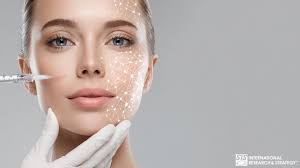The cosmetic enhancement industry has grown dramatically over the last decade, and Botox remains one of its leading treatments. As demand rises, so does the need for effective, ethical, and compliant botox advertising. Unlike typical beauty or skincare promotions, Botox marketing requires a more strategic approach due to medical regulations, safety considerations, and consumer concerns about authenticity and results.
This article explores the evolution of botox advertising, its unique challenges, best practices, digital marketing strategies, ethical concerns, and how brands and clinics connect with today’s cosmetic consumers.
The Rise of Botox in Modern Cosmetic Culture
Botox treatments have become mainstream, expanding far beyond celebrities and high-income clients. Today, people seek Botox for wrinkle reduction, preventative care, and confidence enhancement. This shift has led to a competitive marketplace where clinics and practitioners must differentiate themselves through thoughtful advertising.
As a result, botox advertising must balance three elements:
- Medical accuracy
- Consumer trust
- Marketing creativity
This combination has shaped Botox promotion into a specialized field within the aesthetics industry.
Why Botox Advertising Requires a Unique Approach
Promoting a medical-grade aesthetic treatment comes with more restrictions and responsibilities than general beauty marketing. While showing lipstick results is simple, promoting injectables requires a higher level of care.
1. Regulatory Compliance
Many countries regulate how cosmetic medical procedures can be advertised. These rules may restrict:
- Before-and-after images
- Claims of guaranteed results
- Promotions that trivialize medical treatments
- Encouragement of unrealistic expectations
Effective botox advertising must follow these guidelines to avoid legal consequences.
2. Safety and Trust
Consumers want reassurance that treatments are performed by trained, licensed professionals. Trust is a key factor in choosing an injector or clinic.
3. Ethical Messaging
Botox ads should empower clients rather than exploit insecurities. Ethical marketing builds long-term loyalty and strengthens brand reputation.
Core Strategies Behind Successful Botox Advertising
1. Educational Content Marketing
Modern consumers research treatments before booking appointments. Clinics can create content that explains:
- How Botox works
- What to expect during treatment
- Risks and safety information
- How long results last
- Who qualifies for treatment
Educational content positions the provider as a reliable expert and drives organic engagement.
2. Storytelling and Patient Experiences
Rather than making exaggerated claims, effective botox advertising shares authentic experiences. Examples include:
- Patient testimonials
- Informal Q&A videos
- Confidence-boost stories
- Behind-the-scenes treatment overviews
Human-centered stories help clients emotionally connect with the brand.
3. Subtle and Natural Aesthetic Positioning
Consumers increasingly prefer natural-looking results. Botox advertisers highlight subtle enhancements instead of dramatic transformations. Messaging often focuses on:
- “Refresh, not change”
- “Natural-looking confidence”
- “Preventative and gentle treatments”
This aligns with today’s beauty trends and consumer preferences.
4. Showcasing Professional Credentials
Since Botox is a medical procedure, ads must highlight credentials such as:
- Licensed practitioners
- Certifications
- Experience levels
- Clinic safety standards
This builds trust and reassures clients about the legitimacy of the provider.
5. Social Media Marketing
Platforms like Instagram, TikTok, and Facebook play a major role in Botox promotion. Effective strategies include:
- Short educational reels
- Treatment explanation posts
- Clinic tours
- Professional tips from injectors
- Live Q&A sessions
Engaging and transparent content helps break down fear and stigma surrounding injectables.
The Role of Influencers in Botox Advertising
Influencers have drastically changed aesthetic marketing. Their real-time content, unfiltered opinions, and personal stories help potential clients understand what Botox treatments are like.
Why Influencers Work Well
- They provide relatable experiences
- They reduce stigma through everyday lifestyle content
- They build trust with authentic reviews
However, ethical and legal guidelines require influencers to:
- Disclose sponsored content
- Avoid making medical claims
- Promote only certified providers
When done responsibly, influencer partnerships amplify reach and credibility.
Digital Trends Shaping Botox Advertising
1. Short-Form Video
TikTok and Instagram Reels have made educational bite-sized videos extremely popular. Clinics use these to explain procedures in simple, engaging ways.
2. Search-Based Advertising
Google Ads and SEO are essential for capturing clients searching for:
- “Botox near me”
- “Best Botox clinic”
- “Botox prices”
Optimizing websites for local search significantly boosts visibility.
3. Online Reviews and Reputation Management
Reviews have become a major influence in botox advertising. High ratings on Google, Yelp, and RealSelf increase trust and conversions.
4. Personalized Ads
Retargeting campaigns help clinics reach users who visited their site but didn’t book. Personalized content can include:
- Treatment reminders
- Discounts on consultation fees
- Educational resources
Ethics in Botox Advertising
Ethical advertising protects consumers and enhances brand integrity.
1. Avoiding Unrealistic Expectations
Claims about perfection, instant results, or zero risks are misleading. Ethical ads provide balanced information and encourage consultations.
2. Promoting Body Positivity
Botox marketing should empower clients rather than shame aging. Messaging like “youthful confidence” is more ethical than “fix your wrinkles.”
3. Transparent Information
Ads must be honest about:
- Possible side effects
- Expected results
- Pricing structure
Transparency builds trust and eliminates fear.
Challenges in Botox Advertising
1. Highly Competitive Market
The aesthetics industry is crowded, making differentiation difficult.
2. Regulatory Limitations
Stricter rules may limit creativity compared to other forms of beauty marketing.
3. Misinformation
Unqualified injectors and illegal clinics create confusion in the market, making ethical providers work harder to educate consumers.
4. Stigma and Misinterpretations
Some audiences still misunderstand Botox, believing it results in unnatural looks. Ads must counter these misconceptions through education and real examples.
The Future of Botox Advertising

As consumer expectations evolve, so will advertising strategies.
1. Emphasis on Natural Results
Marketing trends continue shifting toward subtle enhancements rather than dramatic transformations.
2. More Transparency
Consumers expect honest, clear communication about safety, pricing, and practitioner qualifications.
3. Integration of AI and Virtual Consultations
AI tools will help:
- Show predicted results
- Offer skin assessments
- Enhance online consultations
4. Community-Driven Messaging
More clinics will highlight social proof, including patient experiences and long-term client relationships.
Conclusion
The world of Botox advertising is rapidly evolving, balancing medical responsibility with digital creativity. Successful marketing strategies rely on education, authenticity, ethical messaging, and regulatory compliance. As the industry continues to grow, providers who prioritize transparency, trust, and consumer empowerment will stand out.
Botox advertising isn’t just about promoting a cosmetic treatment—it’s about helping clients feel informed, confident, and comfortable in their aesthetic choices.





